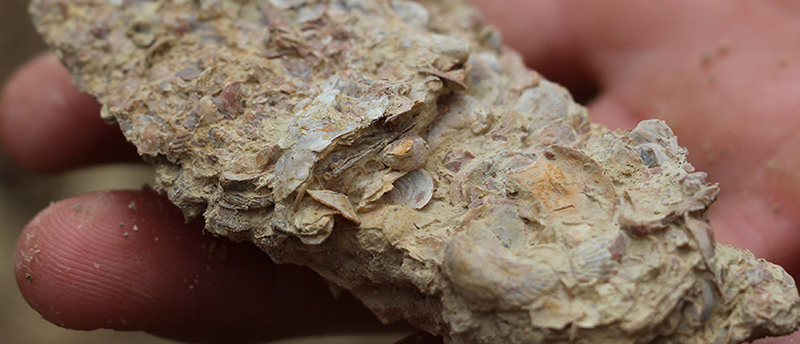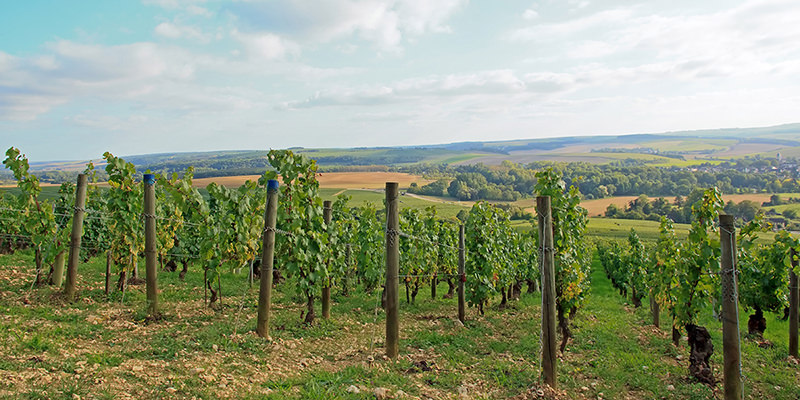Especially if you’re just getting into wine, you probably associate the name “Chablis” with those massive jugs of super-cheap white plonk. You know, the ones that look like they’re specifically intended for your Zombie Apocalypse Readiness Kit. (To be honest, it wouldn’t be the worst thing to stockpile a couple.)
Fortunately, there’s also an entirely different — and dramatically more interesting — kind of Chablis out there. In fact it’s the O. G. Chablis (those jugs just borrowed the name), and it’s one of the most distinctive white wines in the world.
So what makes it so special? After all, Chablis is made from chardonnay grapes. Shouldn’t it sort of conform to at least some of the flavor profile of Chardonnay varietal wine? Not even a little bit. And that’s what we love about it.
Chablis is actually a wine-growing region in the northeastern most part of Burgundy. The reason the wine is named for the region — and not the grape variety — is because the special character of Chablis wine is a direct reflection of the special character of the region. In fact, Chablis may be one of the best wines to help you understand the concept of “terroir,” and how much a winemaker’s choices influence the final character of the wine.
So what are the main factors that make Chablis oh so special?
Chardonnay
It’s weird to say Chardonnay is part of what goes into making Chablis so distinctive, when you consider that what makes Chablis distinctive is the terroir and winemaking, but that’s all being expressed through the Chardonnay grape. And that’s the point. Chardonnay is excellent at absorbing — and reflecting — the terroir where it’s grown; if it wasn’t sensitive to terroir, none of the factors that influence the special flavor of Chablis would really matter.
Climate
Of course, climate plays a role in the flavor of any wine, but it’s especially important — and sometimes hugely damaging — for Chablis. Because the region is so northerly, the grapes tend to ripen more moderately. Basically, you get less sunshine, less sugar, more acidity and a lighter body. But the climate isn’t always good for the grape. There’s an annual danger of spring frosts, severe enough to destroy entire parts of the year’s harvest. Winemakers take all manner of action, including putting small warming stoves into the actual vineyards, to try to save their grapes each year.
Soil

Chablis is part of Burgundy, but it has a very distinctive soil. Well, two kinds of very distinctive soil: Kimmeridgian and Portlandien. See, the Chablis region is basically an old seafloor (150 million years old — clearly that’s gonna yield some character). The soil is very chalky and minerally, studded with fossilized seashells and fragments of marine skeletons. Portlandien soil doesn’t have any significant proportion of fossils, which is why its reserved for fruitier, softer Petit Chablis (the lowest in the Chablis hierarchy). Kimmeridgian soil has a larger proportion of clay marl, limestone, and marine fossils, which is why Chablis grown in it tends to be preferred, since that saline, seashell flavor actually makes it into the bottle, giving Chablis its distinctive flavor profile (which, no surprise, pairs incredibly well with fish).
Aging
For better or worse, Chardonnay around the world tends to see a lot of oak. Not so with Chablis. Chablis is almost always fermented in steel tanks, which helps to preserve some of that minerality as well as letting the flavor of the fruit sing out (whereas oak aging can overpower a grape’s character, as anyone who’s had flabby, overly oaked Chardonnay knows full well). Certain Grand Cru Chablis (the highest level of Chablis classifications) might see the inside of an oak barrel, but for the most part, Chablis is all steel, all the time, which means the special character of the soil and climate can shine through, yielding the Chablis we all know (or sort of know) and love.

